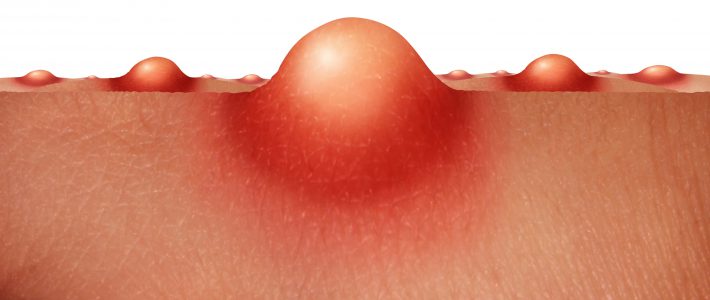Post depilatory skin imperfections can be stressful for anyone. Explaining to your clients the potential side effects of waxing and how they can be managed will reassure your clients. Your speech should be clear and concise in order to catch their attention. To help you out, here is a summary of common cutaneous imperfections and ways to prevent them.
Imperfection n°1: Ingrown Hairs
An ingrown hair is a hair which grows under skin’s surface. This can lead to local irritation and redness. The accumulation of dead skin added to cutaneous dryness favors its development [1] [2] [3] [4].
Prevention: Skin should be exfoliated 1 to 2 times a week and moisturized daily. Optimal results are achieved by alternating mechanical and chemical exfoliation.
Imperfection n°2: Redness
Redness is usually observed on sensitive skin. It could be caused by physical aggression or by the contact of allergen ingredient on the skin [5]. Inquire about past skin reactions your clients may have had in past waxing sessions.
Prevention: In case of skin reactivity, use a hot stripless wax with a creamy texture as traction will be gentler on the skin. Daily skin hydration in the first days after waxing are important. If an allergic reaction occurs, it is important to refrain from future use of the wax used and to look for alternative hair removal methods.
Imperfection n°3: Pimples
The penetration of germs through skin’s pores is the origin of pimple appearance. The immune system locally confines microbial agents and leads to swelling [6].
Prevention: Clean shaved or waxed skin with a compress soaked with a gentle disinfecting lotion or gel. Products made of citrus fruit which have antiseptic properties can be used [7] [8]. Application of a cold compress immediately on the waxed skin tightens pore. Make sure to remove all wax residues on the skin before disinfection as residues can block pores and provoke pimple development.
Do not hesitate to create a file (form or booklet…) with your advice about skin hygiene between waxing sessions and your suggestions for products to use.
Bibliography:
[1] T.J. Jasterzbski and R.A. Schwartz (2015) Pseudofolliculitis cutis: a vexing disorder of hair growth, British Journal of Dermatology 172, pp878–884
[2] Sharon Bridgeman-Shah (2004) The medical and surgical therapy of pseudofolliculitis barbae, Dermatologic Therapy, Vol. 17, 158–163
[3] Ratchathorn Panchaprateep, Aline Tanus and Antonella Tosti (2015) Clinical, dermoscopic, and histopathologic features of body hair disorders, Journal of the American Academy of Dermatology, Vol.72(5), pp.890-900
[5] Hadar Lev-Tov and Howard I Maibach (2012) The Sensitive Skin Syndrome, Indian J Dermatol; 57(6): 419–423.
[6] Introduction à la dermopharmacie et à la cosmétologie, Marie Claude Martini, 3ème édition Lavoisier, 2011
Sources :
[4] http://dermatology.ca/public-patients/hair/ingrown-hair/
[7] https://www.mon-herboristerie.com/blog/epp-extrait-pepins-pamplemousse/
[8] http://www.naturalcosmeticnews.com/new-ingredients/the-most-popular-natural-preservatives-2/




